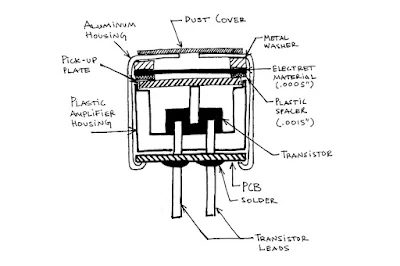 SB SPACE @ ARL $ARLS005ARLS005 ARISSat-1 On the Air for Gagarin AnniversaryZCZC AS05 QST de W1AW Space Bulletin 005 ARLS005From ARRL Headquarters Newington, CT April 8, 2011To all radio amateursSB SPACE ARL ARLS005ARLS005 ARISSat-1 On the Air for Gagarin AnniversaryTo celebrate the 50th anniversary of the first human spaceflight bycosmonaut Yuri Gagarin, the ARISSat-1 satellite aboard theInternational Space Station will be on the air using the station'sexternal antenna. Transmissions will begin on Monday, April 11, at14:30 UTC and continue until 10:30 UTC on April 13.To preserve the satellite's battery, transmissions will cycle on andoff. ARISSat-1 will transmit for 40 to 60 seconds, and then remainsilent for 2 minutes.The FM transmissions on 145.950 MHz will alternate between a voiceID, telemetry values, SSTV images and audio greetings in 15different languages. One of the transmissions will contain audio ofa conversation between Gagarin and ground controllers that wasrecorded during the historic flight.A CW beacon will be heard on 145.919 MHz cycling between theARISSat-1 call sign, telemetry and call signs of individualsinvolved in the ARISS program.BPSK-1000 telemetry transmissions will also take place on 145.920MHz SSB using the new 1kBPSK protocol developed by Phil Karn, KA9Q.AMSAT will issue commemorative certificates to listeners who receivethe ARISSat-1 transmissions. Reports can be e-mailed toGagarin@arissat1.org or yuri@arrisat1.org. Include your name, callsign, a description of what you heard and the UTC time you heard it.Recording the battery voltage telemetry values and the UTC time youreceived them will be especially helpful.You can determine when the International Space Station will bepassing overhead by using the AMSAT-NA online pass prediction toolat, http://www.amsat.org/amsat-new/tools/predict/.NNNN/EX
SB SPACE @ ARL $ARLS005ARLS005 ARISSat-1 On the Air for Gagarin AnniversaryZCZC AS05 QST de W1AW Space Bulletin 005 ARLS005From ARRL Headquarters Newington, CT April 8, 2011To all radio amateursSB SPACE ARL ARLS005ARLS005 ARISSat-1 On the Air for Gagarin AnniversaryTo celebrate the 50th anniversary of the first human spaceflight bycosmonaut Yuri Gagarin, the ARISSat-1 satellite aboard theInternational Space Station will be on the air using the station'sexternal antenna. Transmissions will begin on Monday, April 11, at14:30 UTC and continue until 10:30 UTC on April 13.To preserve the satellite's battery, transmissions will cycle on andoff. ARISSat-1 will transmit for 40 to 60 seconds, and then remainsilent for 2 minutes.The FM transmissions on 145.950 MHz will alternate between a voiceID, telemetry values, SSTV images and audio greetings in 15different languages. One of the transmissions will contain audio ofa conversation between Gagarin and ground controllers that wasrecorded during the historic flight.A CW beacon will be heard on 145.919 MHz cycling between theARISSat-1 call sign, telemetry and call signs of individualsinvolved in the ARISS program.BPSK-1000 telemetry transmissions will also take place on 145.920MHz SSB using the new 1kBPSK protocol developed by Phil Karn, KA9Q.AMSAT will issue commemorative certificates to listeners who receivethe ARISSat-1 transmissions. Reports can be e-mailed toGagarin@arissat1.org or yuri@arrisat1.org. Include your name, callsign, a description of what you heard and the UTC time you heard it.Recording the battery voltage telemetry values and the UTC time youreceived them will be especially helpful.You can determine when the International Space Station will bepassing overhead by using the AMSAT-NA online pass prediction toolat, http://www.amsat.org/amsat-new/tools/predict/.NNNN/EX
 I'm a big fan of Ade Weiss, and I often find myself reaching to his "History of QRP" for technical or techno-literary inspiration. Most writing about ham radio is (understandably) done in a very straightforward technical way, without a lot of emotion. But Ade's writing style captures both the technical and the emotional aspects of homebrewing and QRP. There is a definite poetic elements to it. This article was sent to us from the Hobbit Hole by the Poet Laureate of QRP (AA1TJ). Just click on on the image to enlarge. From a 1973 issue of The Milliwatt:
I'm a big fan of Ade Weiss, and I often find myself reaching to his "History of QRP" for technical or techno-literary inspiration. Most writing about ham radio is (understandably) done in a very straightforward technical way, without a lot of emotion. But Ade's writing style captures both the technical and the emotional aspects of homebrewing and QRP. There is a definite poetic elements to it. This article was sent to us from the Hobbit Hole by the Poet Laureate of QRP (AA1TJ). Just click on on the image to enlarge. From a 1973 issue of The Milliwatt: 
OK guys, please reach back into your memories, back to the late 80's, back to those sad days before the internet, back to the days of TNCs and packet BBSs and all that. I need some help.
I have my little 2 meter packet station running. I'm sending out beacon packets on 145.825 MHz, the freq of the International Space Station. (Is PC-SAT still on that freq also?)
Every morning I go to the old 1994 Satellite Pro computer (thanks to ZL3KE!) and type in mheard to see the list of stations picked up during the most recent passes of the space station. Every day there are several, each with an asterisk indicating that the packets were digipeated, and on this freq the digipeating is done in space.
Here's my question: Two days ago, MY OWN CALLSIGN showed up in the MHEARD list. (Cue ominous music) BUT WITHOUT THE ASTERISK! If I had seen the asterisk, I would have thought that my own packets were being digipeated by the ISS station and coming back at me. But why no asterisk? Long Delayed Echo? Klingons? My misunderstanding of packet technology?
 Here's a really excellent description of how an electret microphone works, complete with a dissection of the device.
Here's a really excellent description of how an electret microphone works, complete with a dissection of the device.
http://www.openmusiclabs.com/learning/sensors/electret-
Crystal mics are much more interesting, of course, because of the opportunity to chemically tailor the audio response...





































